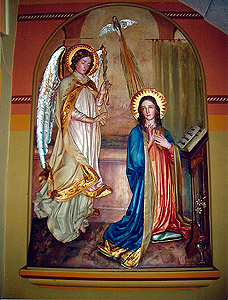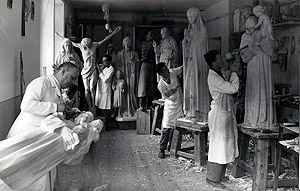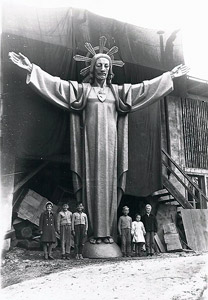History and tradition of woodcarving in Val Gardena
The investigation of Wilhelm and Franz Moroder According Trebinger Christian and Melchior Vinazer listed at the beginning of the 17th One of the first century sculptors in Val Gardena. The Vinazerdynastie was to the 18th Trend-century in the religious sculpture. The Vinazer up next to the sacred high art also produces miniature sculptures in wood and alabaster. Vinazer the masters will have it not then been many requests since the Baroque art triumphed in the period after the Council and in the churches and chapels of our country, the Gothic altars were replaced by Baroque carved. Besides the religious art that was operated by the skilled sculptors, began to carve more and more small profane sculptures. They were mostly series figures that were carved by the many farmers of the valley in the cold season as a sideline opportunity. The products range from Christ figures and nativity scenes, to toys.
After 1870 saw the large sculpture of a revival, the churches and gave commissioned works again reinforced. The art school lagged behind this development. The call for better training was then louder and louder. 1872 built in Ortisei, thanks to a grant from Vienna to art school. In this school, learned not only locals but many aspiring sculptors from other valleys. The religious sculpture owes the school a big boost.
They tried in the sacral large sculpture and established themselves as a known sculpture workshop, including:
- 1872 Joseph and Joseph Rifesser Runggaldier
- 1875 Stuflesser
- 1876 ??Leopold Moroder
- 1880 Prinoth
- 1887 Josef Obletter
- 1890 Perathoner, grandfather of Helmut Perathoner
- 1896 Josef Höglinger

and mother Senoner Hedwig
while carving nativity figures (1962)
After the First World War, Italy was the altar construction activity declines rapidly, even through the crisis of the 30s.
The development of wood carving after the second world war is the pursuit of artistic renewal marked. Every year, collective and personal exhibitions were organized. In the 60 years the Gardena Arts gerit again in crisis. Schnitzmaschienen were used, that industrial wood carving easily copied and reproduced were. Soon the demand was loud, moul a trademark so that the handcarved figures could be distinguished from the machine-made.
In 1969 the first trademark was affixed to a wooden sculpture. These guarantees are still to complete by hand.
Just in the same year was born Helmut Perathoner, he guarantees his work for exclusive arts and crafts by hand. Even his great-grandfather was a sculptor and publisher, as grandfather and father Kaius Kaius, in whose workshop he made his first artistic steps. The maternal grandparents Joseph and Senoner Perathoner Theresa worked alongside their peasantry in the manufacture of small carvings (Nativity). The sculptor apprenticeship he made with his uncle Julius, by the way he visited many characters and Modellierkurse. Since 1992 he works as a freelance sculptor in St. Ulrich. His works have been shown at various exhibitions at home and abroad.







